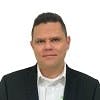European directives and standards for machinery
In the late 1950s, some countries in Europe joined together and founded the European single market as a region with equal legal requirements. Those taking part in this single market shall underlay the same rules, regardless of whether they are based north or south, east or west.
Major topics in the Treaty of the European Union are the cooperation of police and justice systems, a common foreign and security policy, cooperation in the politics of foreign affairs and, last but not least, a common economic policy.
According to the 2017 International Comparison Program, which is managed by the World Bank, the economical dimension of the European Union, compared to that of the United States market is:
- European GDP— $19,453 billion
- European population—440 million
- U.S. GDP—$19,390 billion
- U.S. population—330 million
An outcome of these common regulations are the European directives for machines. A collection of directives for different subjects such as electromagnetic compatibility (the EMC directive), the safety of electrical installations on machines (low-voltage directive), and machine safety in itself (The Machinery Directive).
There are more, but these are the main three directives, which apply to nearly every machine. The nature of these directives is to specify “basic safety and health requirements.” These requirements usually seem to be self-evident, for example: There shall be no hazard from the use of electricity, from vibrations, from noise, from moving parts.
Other requirements are more complex: There shall be no hazard rising from a combination of the other hazards mentioned before.
In all cases, a machine manufacturer has to perform a conformity assessment to identify all applicable directives, find all applicable hazards from these directives and mitigate all hazards as much as possible or as far as they are defined by the technical state of art.
The term “technical state of art” is where European standards come into consideration because the requirements defined in the directives are usually too general to be regarded as construction requirements. The European standards define a way to achieve the goals of these requirements. As an example, consider EN 60204, electrical equipment of machinery. This standard details protections against intended or unintended access to live parts. It is about the colors of control system elements and overcurrent protection, among other things. All of these details are given to support the requirements of the directive: There shall be no hazard from electricity. The same system applies to all of the other requirements.
A manufacturer should therefore always try to find the suitable European standards that support the requirements of the applicable directives when designing a machine. The use of the standards, especially when these standards are harmonized, provides a solid legal backup in case of any uncertainties about the machine.
How can a manufacturer know about harmonized standards? There is a permanently maintained list of harmonized standards for all of the European directives .
Correct selection and application of harmonized standards means that in case of doubt the burden of proof is on the person who doubts, not on the manufacturer.
The good thing about standardization is that the majority of the European standards are just European versions of almost worldwide standards such as ISO and IEC standards. The major standard about functional safety for machine control systems has the number 13849-1. The full title of the German version name is DIN EN ISO 13849-1. Thus, the German version, the European version and the ISO version are technically the same. Similarly, this applies to other EN standards.
In addition to the technical side of the European system, there is also an economic side. A machine that is properly built according to European harmonized standards has the right for market access all over Europe. Neither customers nor authority shall doubt that this product meets the requirements, as long as there is a manufacturer’s declaration of conformity. This declaration has to name the applied directives and the applied standards, which is notable because it means that nobody should doubt the correctness even if it is a manufacturer’s own declaration without the contribution or check of a third party. Third-party contribution is only required for a very small range of machines when not built according to harmonized standards.
The declaration of conformity is challenged only when an issue arises. Since there is no European government in charge to administer all European citizens, the European regulations need and have national adaption in each country. For machine manufacturers that almost does not matter because there is a commitment of all member countries to do these adaptions.
ALSO READ: Intrinsic safety comes with requirements
About the Author
Matthias Wimmer and Leonardo Sanchez
Wieland Electric

Leaders relevant to this article:



